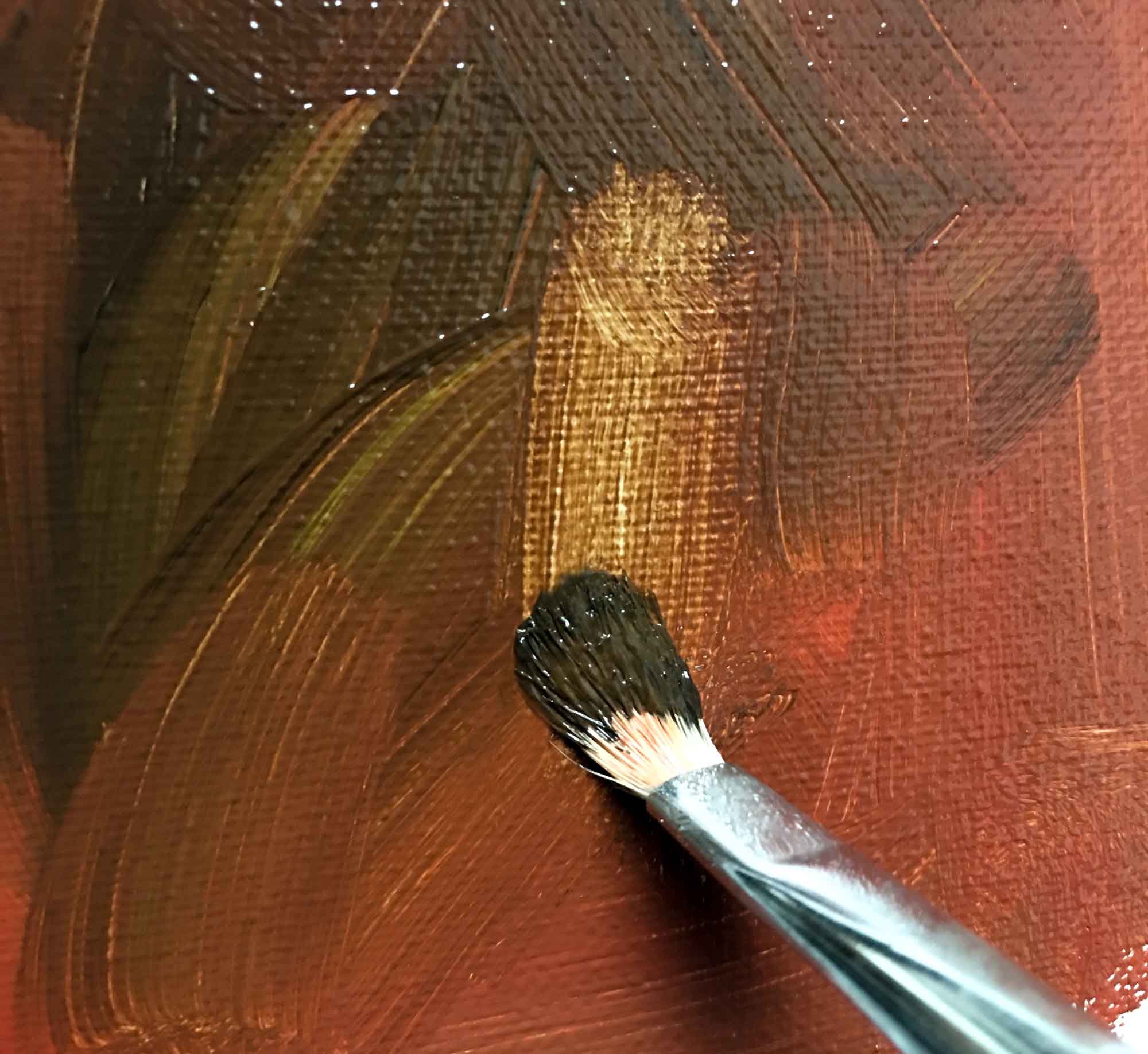https://youtu.be/jHF8Hf_HhgE
Use of paint
This is about oil paint and medium. But a general word about oil paint. Paint with paint; you can not paint without paint! I see students using far too little paint. Listen to me me: this is often simply out of fear. Not because of artistic viewpoints. Overcome that fear.
The problem starts at the palette. If there is too little paint there, how on earth do you get enough on your canvas? Running out of paint often occurs at the end of a painting-session. I see there is a tendency to thin the amount of paint on the palette with medium in order to gain some volume, instead of re-adding paint from the tube. ERROR!
So, do not be stingy with paint. You really need paint to obtain a painterly effect.
Oil paint and medium

I always get a lot of questions about mediums. And I know many colleagues apply medium differently. What is medium? The Artist’s Illustrated says:
Material, usually a luiquid or a gel, that may be added to a paint to alter some of the paint’s properties. Examples: Some mediums change paint’s viscosity, make the colour more transparent, change the degree of surface shine and speed up or slow drying time.
All the same, always keep in mind the rule of thumb when using medium to thin the paint: fat-over-lean rule. “Fat” means containing a relatively high proportion of oil, like linseed oil. “Lean” means less oil, like turps or mineral spirits. Applying paint without adding medium you won’t have problems. Starting with paint diluted with linseed oil and later adding paint that contains turps, you can get into trouble. Firstly, because of the risk of cracking and secondly, you will have problems in adding paint.
